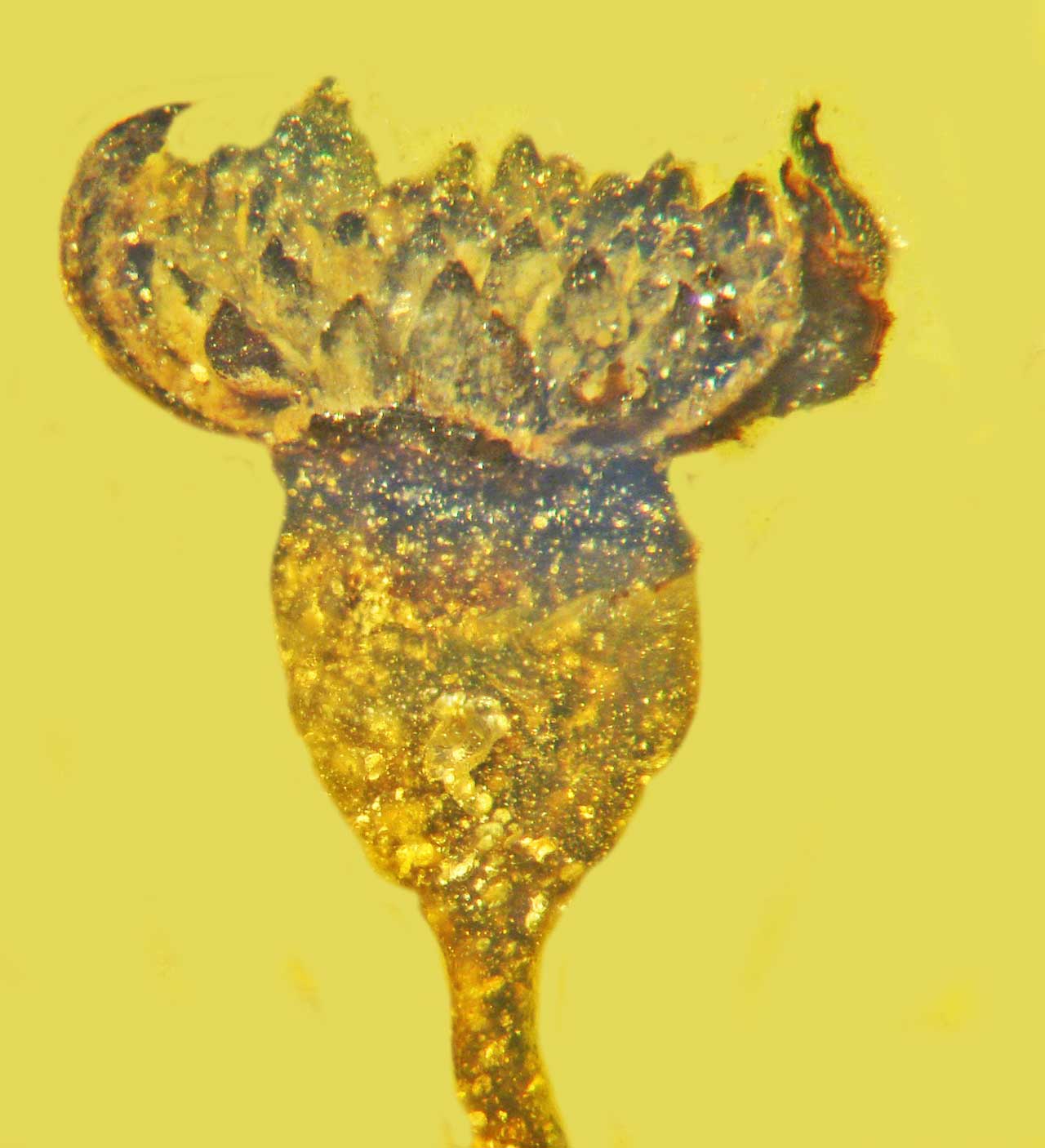New Genus And Species Of Flower Discovered From The Mid-Cretaceous Period
Researchers from Oregon State University discovered a new genus and species of flower that hails from the mid-Cretaceous period. The flower is a male specimen that was frozen in time by Burmese Amber. Researcher George Poinar Jr. says that the flower was part of a forest that existed 100 million years ago.
It's hard to tell in the images, but the flower is tiny at only two millimeters across. It features 50 stamens arranged in a spiral of anthers pointing towards the sky. A stamen consists of an anther, a pollen-producing head, and a filament, which is the stalk that connects the anther to the flower.
Even though the amber encased flower is tiny, the detail surviving after millions and millions of years is impressive. The flower also features an egg-shaped, hollow floral cup, the part of the flower the stamens emanate from. It also has an outer layer of six petal-like components known as tepals.
Researchers also note two-chamber anthers with pollen sacs that split open via laterally hinged valves. The Oregon State University researchers worked with the US Department of Agriculture, naming the flower Valviloculus pleristaminis. Valva is a Latin term for the leaf on a folding door, loculus means compartment, plerus refers to many, and staminis refers to the flower's dozens of male sex organs.
The flower was encased in amber millions of years ago before the ancient supercontinent of Gondwana split apart. When that ancient supercontinent split, the flower rode 4000 miles across the ocean from Australia to Southeast Asia. There is debate on when the chunk of land known as the West Burma Block broke away from the ancient supercontinent.
Some scientists believe it happened 200 million years ago, while others claim it was 500 million years ago. The flower's discovery could help with a more precise date because angiosperms evolved and diversified about 100 million years ago. Poinar says the West Burma Block couldn't have broken off from Gondwana before then, much later than the dates suggested by geologists.


